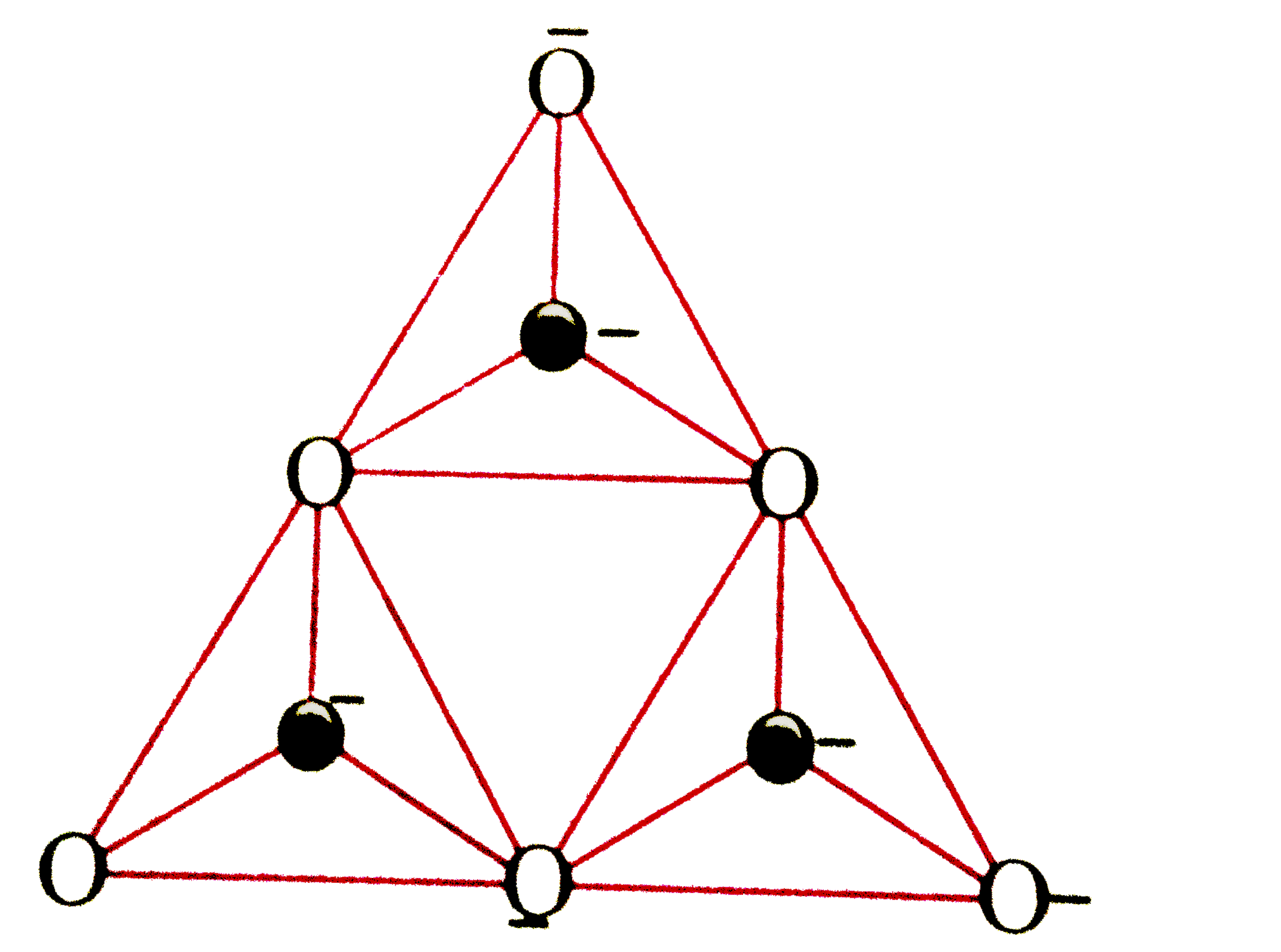Complete Solutions to Integer Type of chapter 14TH GROUP ELEMENTS of Class 11 book with complete answers and questions
| Class 11 | CHEMISTRY |
| Chapter | 14TH GROUP ELEMENTS |
| NARAYANA | Integer Type |
| Number Of Questions | 14 |
| Academic Year | 2023-24 |
How many oxygen atoms are expected to be shared by each `SiO_(4)^(4-)` tetrahedra to form a cyclic silicate ion `Si_(3)O_(9)^(6-)`
View SolutionOne of the calcium silicates is called Wollastonite. The silicate present in the mineral has a plane projection structure as follows.

What is the positive charge that has to be provided to compensate the negative charge of silicate.
View SolutionNumber of oxygen atoms in pyrosillicate is
View SolutionWhat is the maximum covalency for silicon?
View SolutionThe number of corner of O atom shared per tetrahedron in 2D silicate is_______
View SolutionThe following compound `(CH_(3))_(n) Si (Cl)_(4 n)` on hydrolysis and on subsequent polymerisation gives a branched chain silicone. What is the value of n?
View SolutionNumber of moles of free electrons responsible for electrica conductnace of 12 g of graphite are
View SolutionNumber of oxides possible for carbon at normal conditions is
View SolutionNumber of bonding electrons present in one molecule of neutral oxide of 'C' is
View SolutionIn `C_(60)` 'x' number of 6 membered rings are present and 'y' number of 5 membered rings are possible then the difference of `x " & " y` is/are
View SolutionMaximum no.of 'O' atoms are bonded with each Si in `SiO_(2)`.
View SolutionSum of the number of oxygen shared in between two silicon atoms in `Si_(3)O_(9)^(6-)` and `Si_(3)O_(10)^(8-)` is:
View SolutionConsider the following silicates
(a) `BaTi(Si_(2)O_(9))`
(b) `ZnCa_(2)Si_(2)O_(7)`
Then calculate X+Y, where X and Y are total number of monovalent and divalent oxygen atoms in both silicates respectively.
View SolutionConsider following three compounds:
(i) `C_(x)O_(y)` (ii) `C_(x) O_(y+ 1)` (iii) `C_(x + 2) O_(y + 1)`
If `x = y = 1`, then calcuate the value of `|p - q|`, where p and q are total number of `sp^(2)` and sp hybridised carbon atoms respectively in given three compounds.
View Solution
Integer Type questions and complete solutions for chapter 14TH GROUP ELEMENTS of NARAYANA CHEMISTRY (HINGLISH) of Class 11
All Exercises from NARAYANA Class 11 CHEMISTRY 14TH GROUP ELEMENTS
- Assertion And Reason Type
- C.U.Q
- Comprehension Type
- Comprehension type Questions
- Compreshension
- Integer Type
- Integer type Questions
- Level - V Single Answer Type
- Level-I (C.W)
- Level-II (C.W)
- Level-II (H.W)
- Level-III
- Level-III (H.W)
- Level-IV
- Matrix Matching Type
- Matrix Matching type Questions
- Multiple Answer Questions
- Multiple Answer Type
- Multiple Answer type Questions
- Previous Iit Question
- Single Answer type Questions
- Statement Type
- Subjective Questions